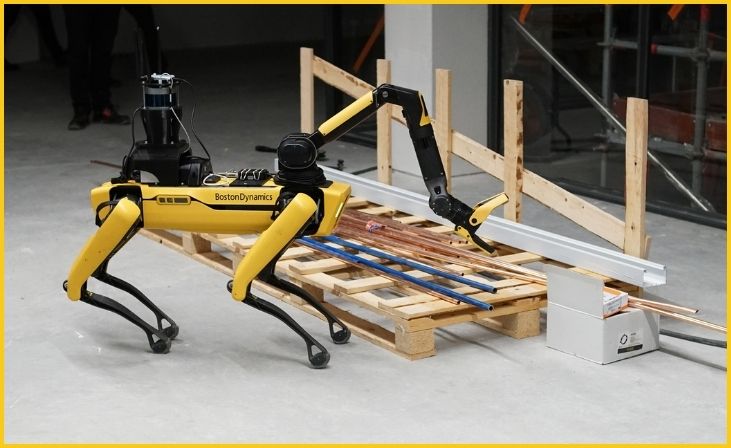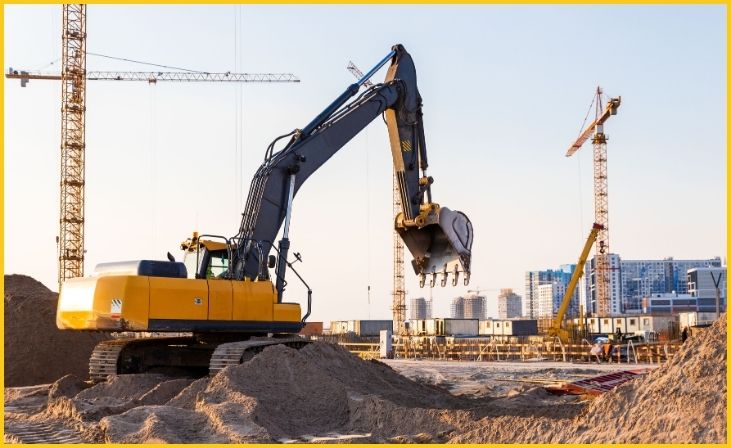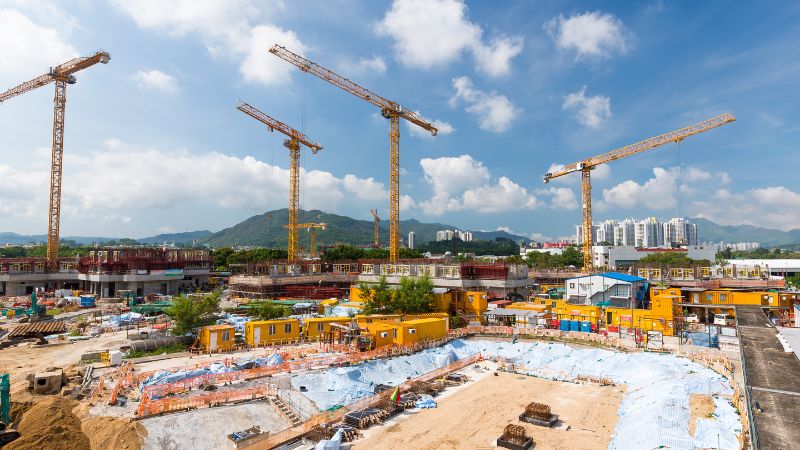The construction industry is undergoing a significant transformation, driven by advancements in automation technologies. In 2024, this sector is expected to continue embracing automation to enhance productivity, improve safety, and reduce costs. Automation in construction is no longer a futuristic concept; it’s becoming a critical tool to meet the growing demands of urbanization, sustainability, and efficiency. In this blog, we will explore the Top 9 Automation Trends in Construction in 2024, focusing on how these technologies are reshaping the industry.
The Importance of Automation in Construction
As construction projects grow in complexity and scale, the importance of automation cannot be overstated. The traditional construction processes often lead to inefficiencies, delays, and safety hazards. By integrating automation, the construction industry can significantly improve workflow, enhance safety protocols, and minimize costs.
Key Reasons for Automation Adoption
- Increased Demand for Speed: With urban populations expanding, the need for faster construction is paramount. Automation can help meet tight deadlines without compromising quality.
- Labor Shortages: The construction industry faces a shortage of skilled laborers. Automation can fill gaps in workforce availability, ensuring projects continue to progress.
- Focus on Safety: Automation reduces the need for human involvement in hazardous tasks, thereby decreasing workplace accidents and improving overall safety records.
Automation Trends in Construction Industry 2024
1. Robotic Construction Workers

Robots in construction are becoming increasingly common, particularly for repetitive and dangerous tasks. These robots can be used for bricklaying, welding, demolition, and even 3D printing structures. By leveraging robotic workers, construction companies can reduce human error, enhance precision, and accelerate project timelines.
Key Benefits:
- Increased productivity by working 24/7
- Enhanced safety by reducing human involvement in hazardous tasks
- Reduced operational costs over time
| Robotic Applications | Function | Example |
|---|---|---|
| Bricklaying Robots | Laying bricks at high speed | Fastbrick Robotics’ Hadrian X |
| Demolition Robots | Precision demolition tasks | Brokk Demolition Robots |
| Welding Robots | Automated welding in large-scale projects | Kawasaki Welding Robots |
Example: The Hadrian X by Fastbrick Robotics can lay up to 1,000 bricks per hour, vastly outperforming human workers.
2. 3D Printing in Construction
3D printing technology, also known as additive manufacturing, is revolutionizing how buildings are constructed. This technology allows for the creation of complex structures with minimal waste and greater design flexibility. In 2024, more companies are expected to adopt 3D printing for both small-scale and large-scale projects.
Key Benefits:
- Customizable designs with less material waste
- Faster project completion times
- Reduction in labor costs
| Advantages | Explanation |
|---|---|
| Reduced Material Waste | 3D printing uses only the necessary materials, cutting down on construction waste. |
| Faster Construction | Projects can be completed in a fraction of the time. |
| Complex Designs Made Simple | 3D printing allows for intricate and unique architectural designs. |
Example: In Dubai, 3D printing was used to create an office building, showcasing the potential of this technology in commercial projects.
3. Drones for Site Monitoring and Surveys
Drones are now an essential tool in the construction industry for monitoring job sites, conducting aerial surveys, and collecting data. In 2024, drone usage is expected to expand, with more sophisticated models offering improved accuracy, faster data collection, and real-time reporting capabilities.
Key Benefits:
- Real-time monitoring and data collection
- Enhanced safety by reducing the need for human surveyors in hazardous areas
- Increased accuracy in measurements and site inspections
| Drone Applications | Benefits |
|---|---|
| Aerial Surveys | Faster, more accurate land assessments |
| Real-time Site Monitoring | Improved project management |
| Safety Inspections | Access to hard-to-reach or dangerous areas |
Example: Drones equipped with LiDAR technology can create detailed 3D maps of a site, aiding in accurate site planning and project management.
4. Building Information Modeling (BIM) Integration with AI
Building Information Modeling (BIM) is a digital representation of a building’s physical and functional characteristics. In 2024, BIM will be enhanced by AI and machine learning algorithms to improve predictive analytics, automate decision-making, and streamline construction processes.
Key Benefits:
- Improved project visualization and collaboration
- Enhanced decision-making through AI-driven insights
- Reduced project risks and errors
| AI-Enhanced BIM Capabilities | Function |
|---|---|
| Predictive Analytics | Forecasting potential issues and delays |
| Automated Design Adjustments | AI suggesting design optimizations in real-time |
| Risk Management | Identifying and mitigating risks early in the project |
Example: AI-enhanced BIM can predict potential clashes in a building’s design and suggest alterations, ensuring seamless project execution.
Also, Read – Top 9 Sustainable and Eco-Friendly Construction Methods
5. Autonomous Heavy Machinery

Autonomous heavy machinery, such as excavators, bulldozers, and cranes, are becoming a reality in 2024. These machines can perform earth-moving and other heavy tasks with minimal human intervention, reducing operational costs and increasing productivity.
Key Benefits:
- Reduced labor costs
- Enhanced safety on construction sites
- Faster completion of large-scale tasks
| Types of Autonomous Machinery | Application |
|---|---|
| Autonomous Excavators | Digging and earth-moving tasks |
| Self-driving Dump Trucks | Transporting materials on construction sites |
| Autonomous Cranes | Lifting and placing heavy materials |
Example: Komatsu’s autonomous dump trucks are already being used in mining and construction, showcasing the viability of self-operating heavy equipment.
6. Wearable Technology for Construction Worker
In 2024, wearable technology like smart helmets, safety vests, and augmented reality (AR) glasses will become standard on construction sites. These devices are designed to enhance worker safety, provide real-time data, and increase efficiency by integrating with other automated systems.
Key Benefits:
- Enhanced safety through real-time monitoring of worker health and location
- Improved communication and coordination on-site
- Integration with AR for better training and project visualization
| Wearable Devices | Function |
|---|---|
| Smart Helmets | Monitor worker health and safety conditions |
| AR Glasses | Provide real-time project information and visualization |
| Smart Vests | GPS tracking and fall detection for workers |
Example: DAQRI’s smart helmet provides workers with real-time data and AR overlays to improve their situational awareness and project accuracy.
7. AI-Powered Predictive Maintenance
AI-powered predictive maintenance systems use data from sensors embedded in machinery and structures to predict when equipment or materials will need maintenance or replacement. This technology helps avoid costly downtimes and ensures the longevity of construction equipment.
Key Benefits:
- Reduced equipment downtime and repair costs
- Proactive identification of potential equipment failures
- Increased efficiency in equipment utilization
| AI Application | Benefit |
|---|---|
| Equipment Health Monitoring | Predicts maintenance needs to prevent breakdowns |
| Real-time Data Analysis | Identifies anomalies and addresses issues early |
| Performance Optimization | Ensures machinery operates at peak efficiency |
Example: Caterpillar uses AI-powered systems to monitor their equipment’s health and alert operators when maintenance is needed, reducing unexpected breakdowns.
8. Modular and Prefabrication Automation
Modular construction and prefabrication involve assembling building components off-site and transporting them to the construction site. In 2024, this method is becoming more automated, allowing for quicker and more cost-efficient building processes.
Key Benefits:
- Faster construction times due to off-site assembly
- Improved quality control as modules are built in controlled environments
- Reduced material waste and on-site disruptions
| Advantages | Explanation |
|---|---|
| Faster Build Times | Prefabricated components can be assembled quickly. |
| Improved Quality | Controlled environments ensure better quality control. |
| Reduced Environmental Impact | Less on-site waste and disturbance to surrounding areas. |
Example: Companies like Katerra are automating the prefabrication process, producing entire building components off-site to streamline construction timelines.
9. Digital Twins for Construction Projects

Digital twins are virtual replicas of physical assets, processes, or systems that can be used to simulate and optimize construction projects. In 2024, digital twin technology is set to play a crucial role in the management of construction projects, offering real-time data to improve decision-making.
Key Benefits:
- Real-time monitoring and adjustments during construction
- Improved project planning and risk management
- Enhanced collaboration among stakeholders
| Benefits of Digital Twins | Explanation |
|---|---|
| Real-time Data Analysis | Allows for adjustments and improvements on the fly |
| Risk Mitigation | Helps foresee and avoid potential construction issues |
| Enhanced Project Visualization | Stakeholders can see the project in its virtual form |
Example: Siemens uses digital twin technology to optimize building performance and ensure efficient project execution by simulating different scenarios.
Conclusion
The construction industry is experiencing a transformative period with automation playing a central role in shaping its future. The trends highlighted here—from robotic workers to AI-driven maintenance—demonstrate how innovation is streamlining operations, improving safety, and reducing costs. As the automation trends industry continues to evolve, companies that embrace these technologies will gain a competitive edge, offering more efficient, safer, and sustainable construction solutions.
By adopting these Top 9 Automation Trends in Construction in 2024, the industry is set to achieve unprecedented levels of productivity, efficiency, and sustainability, ensuring that construction projects meet the demands of a rapidly changing world.


